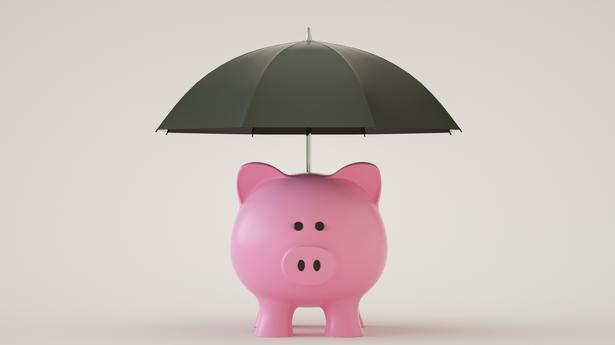
Of what good is a bad bank?
The Hindu
How does the piling up of non-performing assets affect the functioning of a bank? Have bad banks been set up in other countries?
The story so far: Finance Minister Nirmala Sitharaman on Monday announced that the National Asset Reconstruction Company (NARCL) along with the India Debt Resolution Company (IDRCL) will take over the first set of bad loans from banks and try to resolve them. While the problem of bad loans has been a perennial one in the Indian banking sector, the decision to set up a bad bank was taken by the Union government during the Budget presented last year in the aftermath of the nationwide lockdowns, and the moratorium was subsequently extended to borrowers by the Reserve Bank of India (RBI).
It should be noted that the health of the balance sheets of Indian banks has improved significantly over the last few years with their gross non-performing assets (GNPA) ratio declining from a peak of 11.2% in FY18 to 6.9% in Q2FY22.
A bad bank is a financial entity set up to buy non-performing assets (NPAs), or bad loans, from banks. The aim of setting up a bad bank is to help ease the burden on banks by taking bad loans off their balance sheets and get them to lend again to customers without constraints. After the purchase of a bad loan from a bank, the bad bank may later try to restructure and sell the NPA to investors who might be interested in purchasing it. A bad bank makes a profit in its operations if it manages to sell the loan at a price higher than what it paid to acquire the loan from a commercial bank. However, generating profits is usually not the primary purpose of a bad bank — the objective is to ease the burden on banks, of holding a large pile of stressed assets, and to get them to lend more actively.
A supposed advantage in setting up a bad bank, it is argued, is that it can help consolidate all bad loans of banks under a single exclusive entity. The idea of a bad bank has been tried out in countries such as the U.S., Germany, Japan and others in the past.
The troubled asset relief program, also known as TARP, implemented by the U.S. Treasury in the aftermath of the 2008 financial crisis, was modelled around the idea of a bad bank. Under the program, the U.S. Treasury bought troubled assets such as mortgage-backed securities from U.S. banks at the peak of the crisis and later resold it when market conditions improved. It is estimated that the Treasury through its operations earned a nominal profit of anything between $11 billion to $30 billion, although some contest these figures.
Many critics, however, have pointed to several problems with the idea of a bad bank to deal with bad loans. Former RBI governor Raghuram Rajan has been one of the fiercest critics of the idea, arguing that a bad bank backed by the government will merely shift bad assets from the hands of public sector banks, which are owned by the government, to the hands of a bad bank, which is again owned by the government. There is little reason to believe that a mere transfer of assets from one pocket of the government to another will lead to a successful resolution of these bad debts when the set of incentives facing these entities is essentially the same.
Other analysts believe that unlike a bad bank set up by the private sector, a bad bank backed by the government is likely to pay too much for stressed assets. While this may be good news for public sector banks, which have been reluctant to incur losses by selling off their bad loans at cheap prices, it is bad news for taxpayers who will once again have to foot the bill for bailing out troubled banks.











